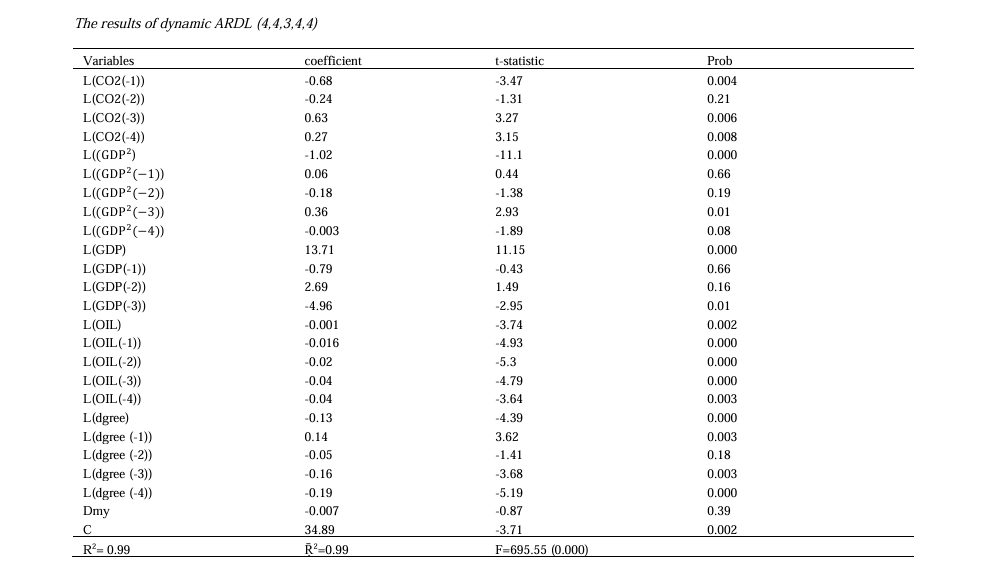The Effect of Oil Price Fluctuations on Environmental Pollution in Iran Based on the New GAS Model
Keywords:
GAS model, CO2 emission and Kuznets' theoryAbstract
Today, air pollution caused by emitting pollutants is one of the most serious concerns in the world. CO2 gas emission is considered as one of the most significant and effective pollutants. In addition, the consumption and production of fossil fuels such as oil is one of the factors affecting the over-emission of this kind of gas. Due to the significance of this subject, the present study investigated the effect of oil price fluctuations on the amount of CO2 produced in Iran, as well as the degree of trade openness and Kuznets theory in relation to economic growth and emission of pollutants during 1970-2020. The GAS method was used to estimate the oil price fluctuations and the ARDL method was applied for evaluating the short-term and long-term effects. The results of this study indicated that oil price fluctuations and the degree of trade openness play a negative effect on CO2 emission. In this study, Kuznets' theory was confirmed in relation to economic growth and pollutant emission. In other words, the GDP development can have a negative relationship with CO2 emission after the initial stages. However, such effect is much lower than its positive effect on pollution in the initial stages of development.
References
Bilali, H., Zamani, A., & Yousefi, A. (2012). The relationship between economic growth and environmental pollution in the oil sector with an emphasis on its price fluctuations (a case study of Iran's economy). Scientific-Research Quarterly of Planning and Budget, 3(18), 49-65. http://jpbud.ir/article-1-1070-en.html
Cashin, P., Mohaddes, K., Raissi, M., & Raissi, M. (2014). The differential effects of oil demand and supply shocks on the global economy. Energy Economics, 44, 113-134. https://doi.org/10.1016/j.eneco.2014.03.014
Chan, Y. T. (2020). Are macroeconomic policies better in curbing air pollution than environmental policies? A DSGE approach with carbon-dependent fiscal and monetary policies. Energy Policy, 141, 111454. https://doi.org/10.1016/j.enpol.2020.111454
Chen, R., & Xu, J. (2019). Forecasting volatility and correlation between oil and gold prices using a novel multivariate GAS model. Energy Economics, 78, 379-391. https://doi.org/10.1016/j.eneco.2018.11.011
Derpich, I. (2024). Pursuing Optimization Using Multimodal Transportation System: A Strategic Approach to Minimizing Costs and CO2 Emissions. Journal of Marine Science and Engineering, 12(6), 976. https://doi.org/10.3390/jmse12060976
Erdogan, A. E. (2014). Bilateral trade and the environment: a general equilibrium model based on good for the environment? American Economic Review, 91(4), 877-908. https://doi.org/10.1257/aer.91.4.877
FaikBilgili, E., Koçak, b., & Ümit, B. (2016). The dynamic impact of renewable energy consumption on CO2 emissions: A revisited Environmental Kuznets Curve approach. Renewable and Sustainable Energy Reviews, 54, 838-845. https://doi.org/10.1016/j.rser.2015.10.080
Ghorani-Azam, A., Riahi-Zanjani, B., & Balali-Mood, M. (2016). Effects of air pollution on human health and practical measures for prevention in Iran. Journal of Research in Medical Sciences, 21(1). https://journals.lww.com/jrms/fulltext/2016/21000/effects_of_air_pollution_on_human_health_and.65.aspx
Kohensal, M. H., & Bahraminaseb, M. (2018). Evaluating the relationship between energy consumption and pollution with economic growth in line with general environmental policies. Strategic and Macro Policy Quarterly, 8(28), 500-525. https://www.jmsp.ir/article_102261_en.html?lang=en
Madah, M., & Abdicherlo, M. (2020). Evaluating the effect of oil on environmental pollution in OPEC member countries based on general policies. Strategic and Macro Policy Quarterly, 8(9), 24-37. https://www.jmsp.ir/mobile/article_102270.html?lang=en
Malayaranjan, S., & Jayantee, S. (2020). Effects of renewable and non-renewable energy consumption on CO2 emissions in India: Empirical evidence from disaggregated data analysis. Journal of Public Affairs, e2307. https://doi.org/10.1002/pa.2307
Mohamued, E. A., Ahmed, M., Pypłacz, P., Liczmańska-Kopcewicz, K., & Khan, M. A. (2021). Global Oil Price and Innovation for Sustainability: The Impact of R&D Spending, Oil Price and Oil Price Volatility on GHG Emissions. Energies, 14, 1757. https://doi.org/10.3390/en14061757
Pajooyan, J., & Khoshnevis, M. (2012). Investigating the Effect of Environmental Pollution on Human Development Index in Developed Countries. Journal of Financial Economics, 6(20), 39-67.
Pata, U. K., Dam, M. M., & Kaya, F. (2023). How effective are renewable energy, tourism, trade openness, and foreign direct investment on CO2 emissions? An EKC analysis for ASEAN countries. Environmental Science and Pollution Research, 30(6), 14821-14837. https://doi.org/10.1007/s11356-022-23160-z
Sarker, P. K., Bouri, E., & Marco, C. K. L. (2023). Asymmetric effects of climate policy uncertainty, geopolitical risk, and crude oil prices on clean energy prices. Environmental Science and Pollution Research, 30(6), 15797-15807. https://doi.org/10.1007/s11356-022-23020-w
Tagvai, M., & Hajian, P. (2014). Investigating the relationship between economic growth, energy consumption, degree of international economic openness and environmental pollution in Iran
Tayibi, S. K., Aghili, F., & Allahdadian, L. (2018). Liberalizing the degree of openness of the economy, oil shocks and environmental quality: with the application of oil exporting and importing countries. Environmental Science Quarterly, 1(16), 159-172.
Velayatzadeh, M. (2020). Air pollution sources in Ahvaz city from Iran. Journal of Air Pollution and Health, 5(2), 147-152. https://doi.org/10.18502/japh.v5i2.4243
Xu, P., Zhang, J., & Mehmood, U. (2023). How do green Investments, foreign direct investment, and renewable energy impact CO2 emissions? Measuring the role of education in E-7 nations. Sustainability, 15(19), 14052. https://doi.org/10.3390/su151914052
Yang, F., & Lee, H. (2022). An innovative provincial CO2 emission quota allocation scheme for Chinese low-carbon transition. Technological Forecasting and Social Change, 182, 121823. https://doi.org/10.1016/j.techfore.2022.121823
Yongyou, N., Pingchao, C., Tasangyao, Z., & Enci, W. (2020). Impacts of international oil price fluctuations on China's PM2.5 concentrations: a wavelet analysis. Economic Research-Ekonomska Istraživanja, 33(1), 2488-2508. https://doi.org/10.1080/1331677X.2019.1656098

Downloads
Published
Submitted
Revised
Accepted
Issue
Section
License
Copyright (c) 2025 Mahdi Pendar; Elham Vafaei, Azhin Javaheri (Author)

This work is licensed under a Creative Commons Attribution-NonCommercial 4.0 International License.









